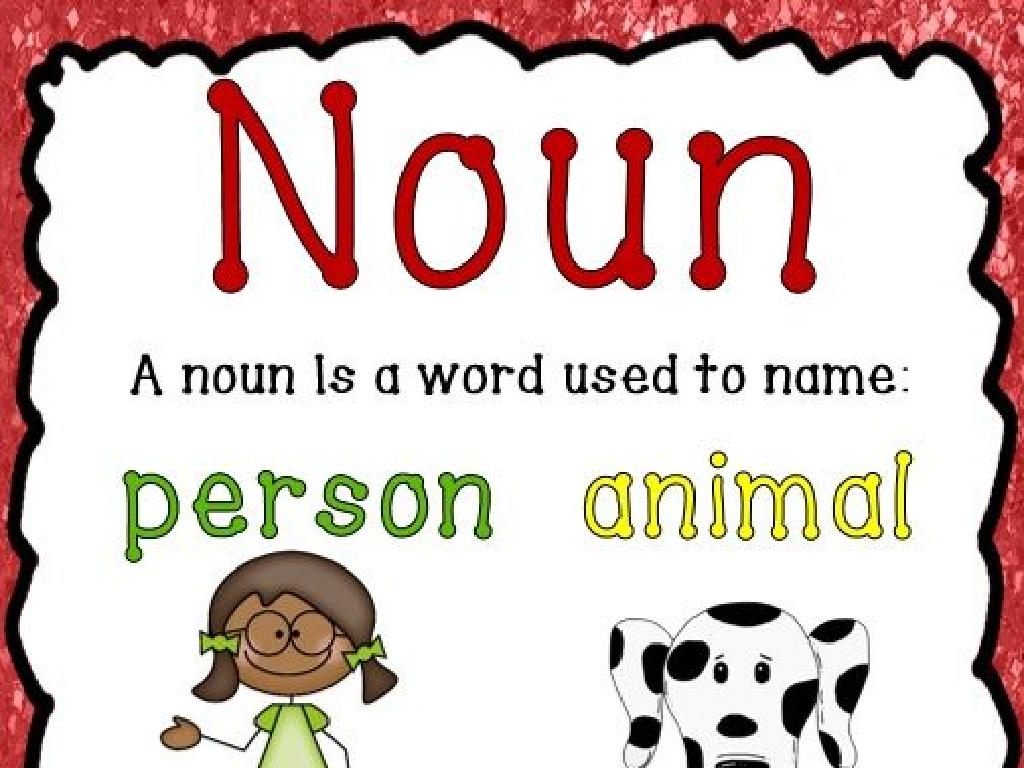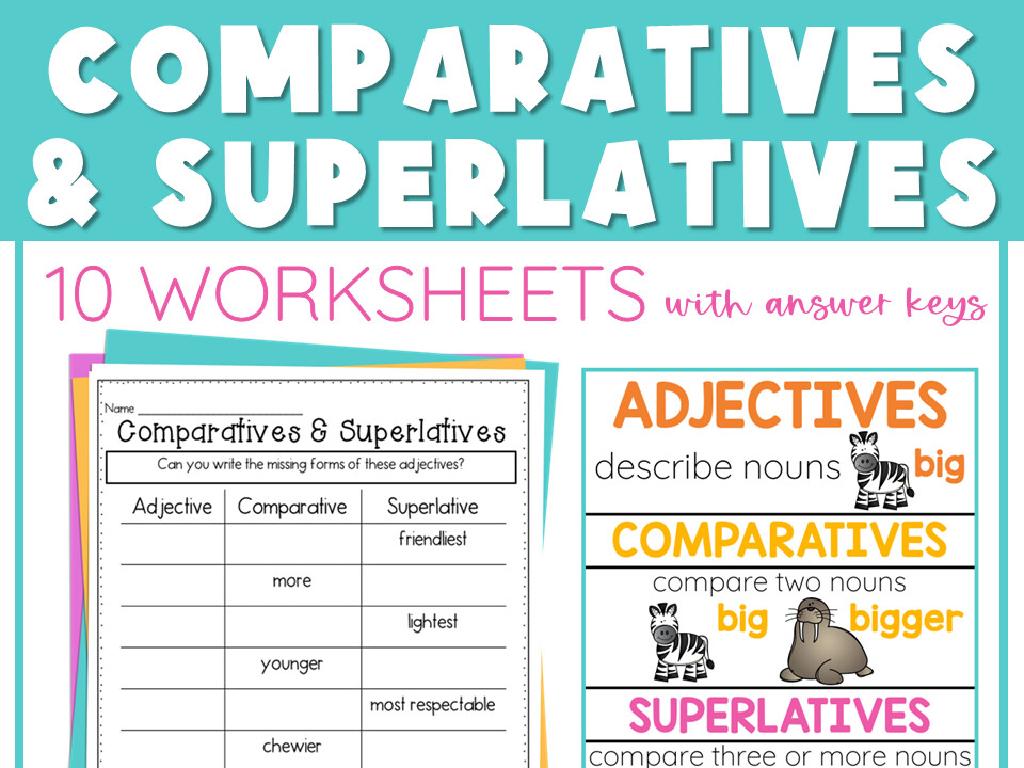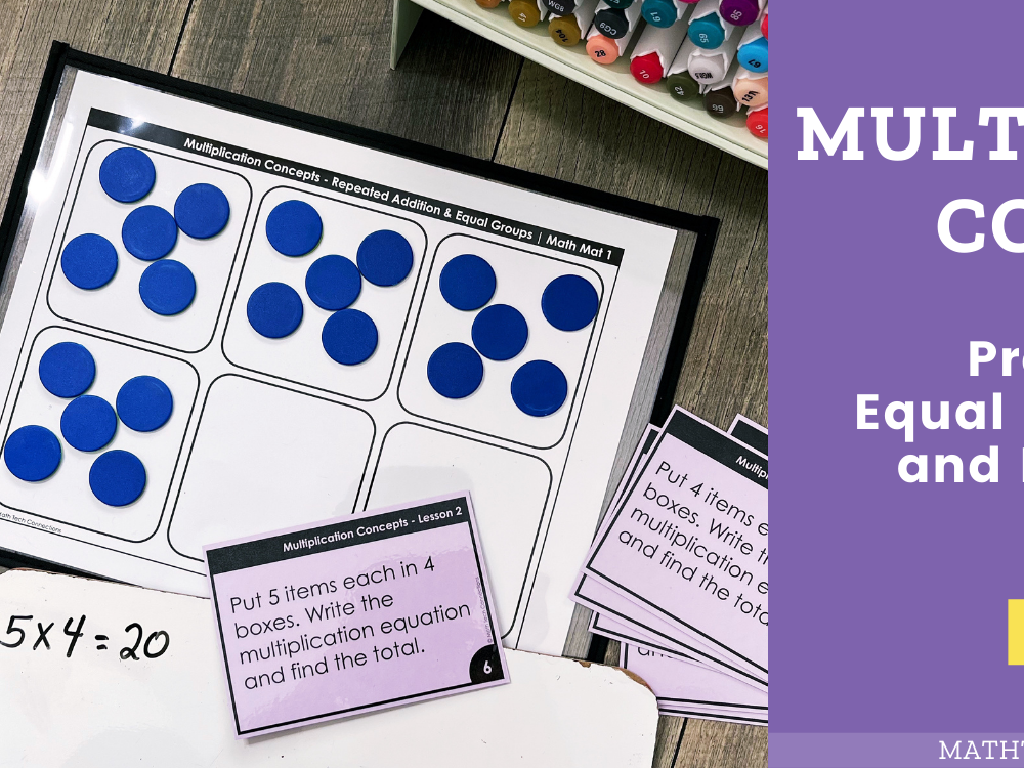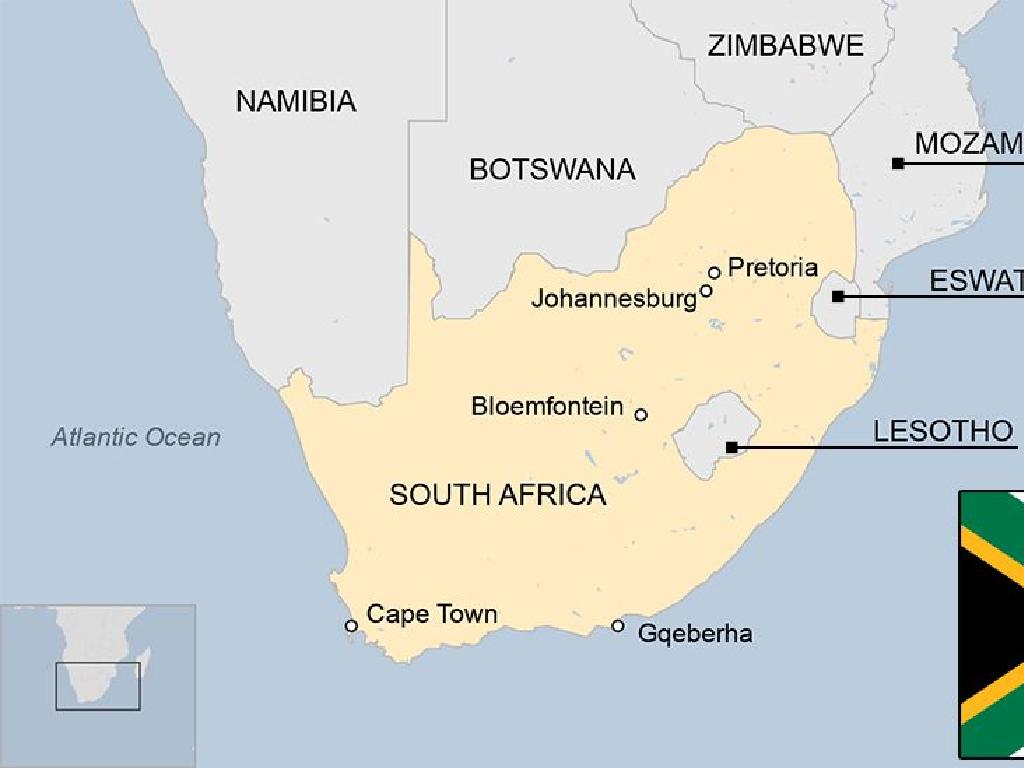Which Could Happen In Real Life?
Subject: Language arts
Grade: Kindergarten
Topic: Reality Vs. Fiction
Please LOG IN to download the presentation. Access is available to registered users only.
View More Content
Understanding Reality vs. Fiction
– Greet and introduce today’s topic
– Real vs. make-believe
– Real things exist and we can see, touch, or experience them
– Examples of real things
– Pets, cars, trees, and families are all real
– Examples of make-believe
– Superheroes, unicorns, and dragons are make-believe
|
Begin the class by warmly greeting the students and introducing the concept of reality versus fiction. Explain that real things are those we can interact with in our daily lives, like animals, plants, and other people. In contrast, make-believe things come from our imagination and are often found in stories and movies, like fairytale creatures and characters with superpowers. Use tangible examples to help the children differentiate between the two. Encourage them to think of their own examples and share them with the class. This will help them grasp the concept of reality versus fiction in a fun and engaging way.
Real Life vs. Make-Believe
– What can happen in real life?
– Pictures of everyday activities
– Photos of people eating, playing, or going to school
– Share your real-life stories
– Each student tells about a day they remember
– Discuss what is real and not real
– Help kids understand the difference between real and imaginary
|
This slide introduces the concept of reality versus fiction to Kindergarten students. Start by explaining what ‘real life’ means, emphasizing that these are things that can actually happen or exist. Show pictures depicting real-life scenarios such as a family meal, children playing in the park, or going to school, and discuss these images with the class. Encourage students to share their own experiences by asking them to talk about things they do in their daily lives. Use this opportunity to help them differentiate between real events and make-believe or fictional stories. The discussion should be interactive, allowing students to ask questions and engage with the concept at a level they can understand.
Exploring ‘Fiction’: Imaginary Friends
– Fictional characters are make-believe
– Like unicorns or dragons in books
– Fictional settings are not real places
– Places like castles in the sky or candy lands
– Stories can have magic or talking animals
– Examples: A mouse that cooks or a car that flies
– Fiction is fun to read and imagine
|
This slide is aimed at helping Kindergarten students understand the concept of fiction. Show them pictures of clearly fictional characters like unicorns, dragons, or cartoon characters, and fantastical settings like a castle in the sky or a land made entirely of sweets. Explain that these characters and places are created by people’s imaginations and are part of stories that are meant to entertain us. They are not real, but they help us imagine and have fun. Encourage the children to think about their favorite stories and discuss what makes them fictional. Emphasize that while these things don’t exist in real life, it’s enjoyable to imagine and read about them.
Real or Make-Believe?
– Compare real vs. make-believe pictures
– Decide what could really happen
– Look at pictures and think if you’ve seen it happen for real
– Explain why it could or couldn’t happen
– Use your own experiences to decide if it’s real or not
– Share your thoughts with the class
|
This slide is designed to help Kindergarten students understand the difference between reality and fiction. Present them with side-by-side images, one depicting something from real life and the other showing something fictional (e.g., a child riding a bike vs. a child flying on a broomstick). Ask the students to identify which image represents something that could happen in real life and encourage them to explain their reasoning. This activity will help them use critical thinking to differentiate between what is real and what is make-believe. It’s also a great opportunity for students to practice verbalizing their thoughts and participating in a group discussion.
Real or Make-Believe?
– View images together
– Decide if they are real or not
– Explain why you think so
– Use sentences like ‘I think this is make-believe because…’
– Learn about reality vs. fiction
– Understand that some stories are for fun and not real
|
This slide is part of an interactive class activity designed to help Kindergarten students differentiate between what can happen in real life and what is make-believe. Display a variety of images that depict both realistic scenarios and fictional ones. Ask the students to identify whether each image could happen in real life or if it is make-believe. Encourage them to explain their reasoning, which will help develop their critical thinking skills. For example, an image of a child riding a bike is real, while a picture of a unicorn is make-believe. This activity will also introduce the concept of fiction as a category of storytelling that includes elements that are imagined or not true.
Let’s Play a Sorting Game!
– Sort pictures into two baskets
– Basket 1: Real Life
– Things we see and do every day
– Basket 2: Make-Believe
– Imaginary or fantasy things, like unicorns
– Learn the difference between real and not real
– Helps us understand what can really happen
|
This slide introduces a class activity designed to help Kindergarten students distinguish between reality and fiction. Set up two baskets labeled ‘Real Life’ and ‘Make-Believe.’ Provide a stack of assorted pictures depicting various scenarios, characters, and objects. Explain the rules: students will take turns picking a picture and deciding if it belongs in the ‘Real Life’ basket (things that can actually happen or exist) or the ‘Make-Believe’ basket (things from stories, imagination, or fantasy). This activity will help students understand the concept of reality versus fiction in a fun, interactive way. Possible variations of the activity could include using toys instead of pictures, role-playing scenarios, or drawing their own examples of real life and make-believe.
Class Activity Time: Real or Make-Believe?
– Join the sorting game
– Pick a picture card
– Decide if it’s real or not
– Is it something you see in everyday life or just in stories?
– Explain your choice to the class
– Tell us why you think it’s real or make-believe
|
This interactive class activity is designed to help Kindergarten students differentiate between reality and fiction. Set up a sorting game with various picture cards that depict both real-life scenarios and fictional ones. Guide the students to choose a picture and then decide if it could happen in real life or if it’s something that is just in stories or make-believe. Encourage them to explain their reasoning to the class, fostering critical thinking and public speaking skills. For example, a picture of a child brushing their teeth would go in the ‘Real’ category, while an image of a unicorn would be sorted into ‘Make-Believe’. Provide support and positive reinforcement as they make their choices and explanations.
Real Life or Make-Believe: A Review
– Recap real vs. make-believe
– Real life is what we can see and do, make-believe is from imagination
– Review class activity examples
– Look at pictures we sorted: animals talking vs. people eating
– Discuss why understanding is important
– Encourage sharing thoughts
– Sharing helps us learn from each other
|
This slide aims to consolidate the children’s understanding of the difference between reality and fiction. Begin by recapping the key differences between what can happen in real life and what belongs to the world of make-believe. Go over some of the examples that the students worked on during the class activity, such as the difference between a talking animal (fiction) and a person eating (reality). Emphasize the importance of distinguishing between the two and how this skill helps us understand stories better. Encourage the children to share their thoughts and feelings about the stories and examples discussed. This will help reinforce their learning and allow them to express their understanding in their own words.
Story Time: Reality vs. Fiction
– Read a story together
– Talk about real-life events
– Discuss events that could really happen
– Identify fictional elements
– Find parts of the story that are make-believe
– Share thoughts and ideas
|
This slide is for a class activity where the teacher will read a story to the students and then lead a discussion on distinguishing reality from fiction. The teacher should choose a story appropriate for kindergarten students, with clear elements of both reality and fantasy. After reading, the teacher will guide the students to talk about which parts of the story could happen in real life, such as a character going to school, and which parts are fictional, like animals talking. The teacher should encourage students to share their thoughts and ideas, fostering a class discussion that helps them understand the difference between real and imaginary scenarios. This activity will help develop critical thinking skills and enhance their comprehension of literature.
Today’s Adventure: Reality vs. Fiction
– We learned about real and make-believe
– Share your favorite real story at home
– Tell your family about something real you learned!
– Say goodbye and thank you for listening
– Exciting stories await in our next class
– Next time, we’ll explore more about the world!
|
In this concluding slide, we wrap up the lesson by reminding the children about the difference between things that can happen in real life and things that are just make-believe. Encourage the kids to talk to their families about what they’ve learned, which helps reinforce their understanding. A warm goodbye ensures they leave with a positive feeling, and teasing the next class with the promise of more exciting stories helps build anticipation and keeps them engaged in learning.






